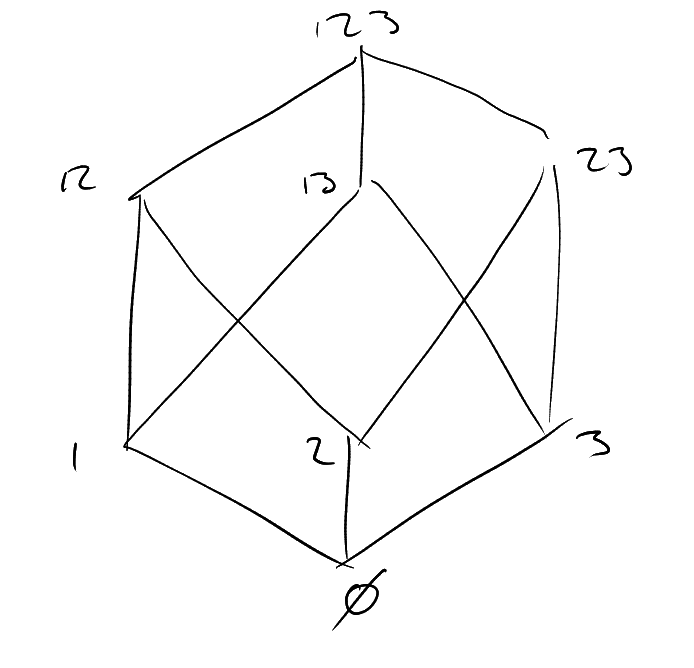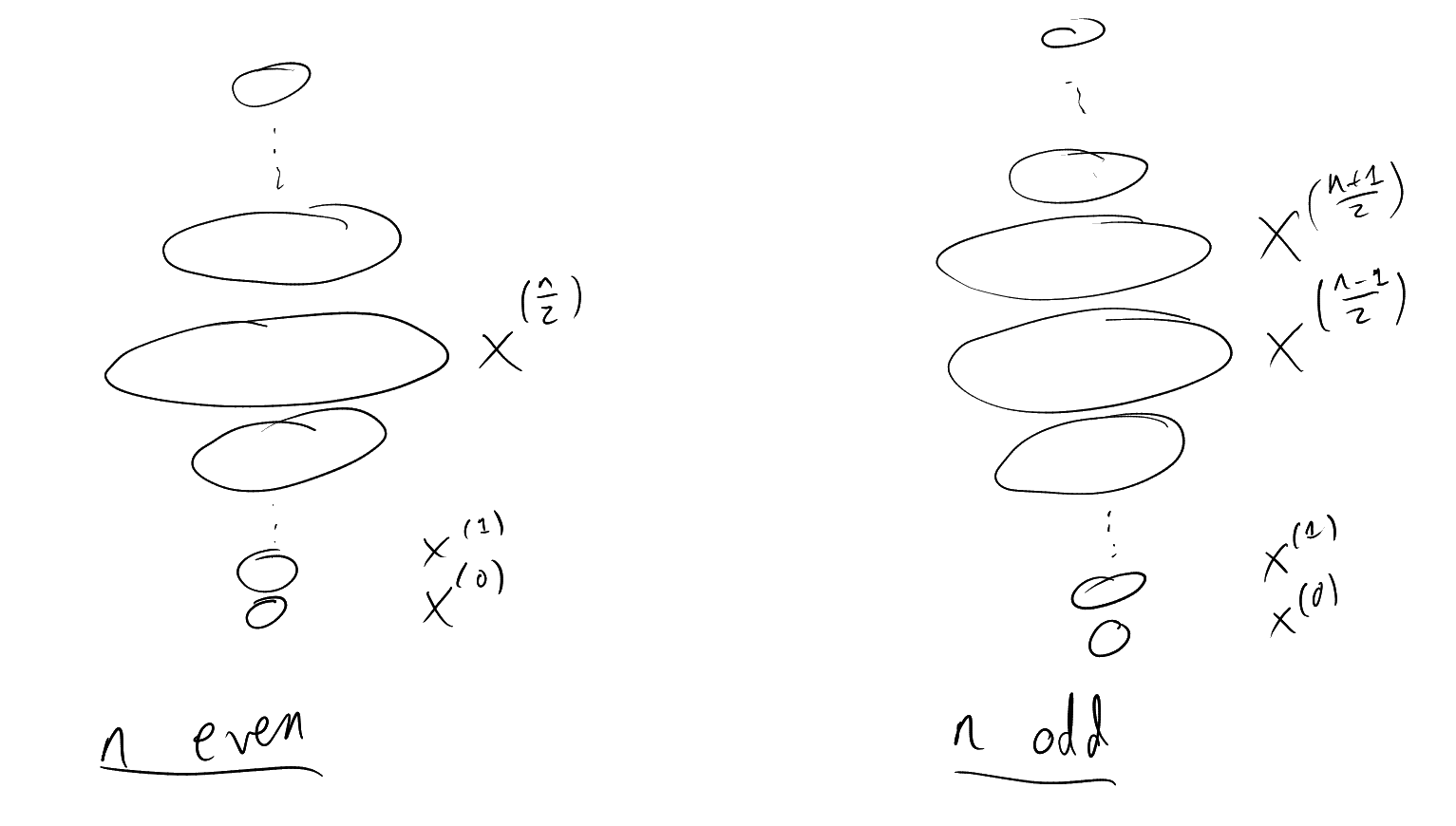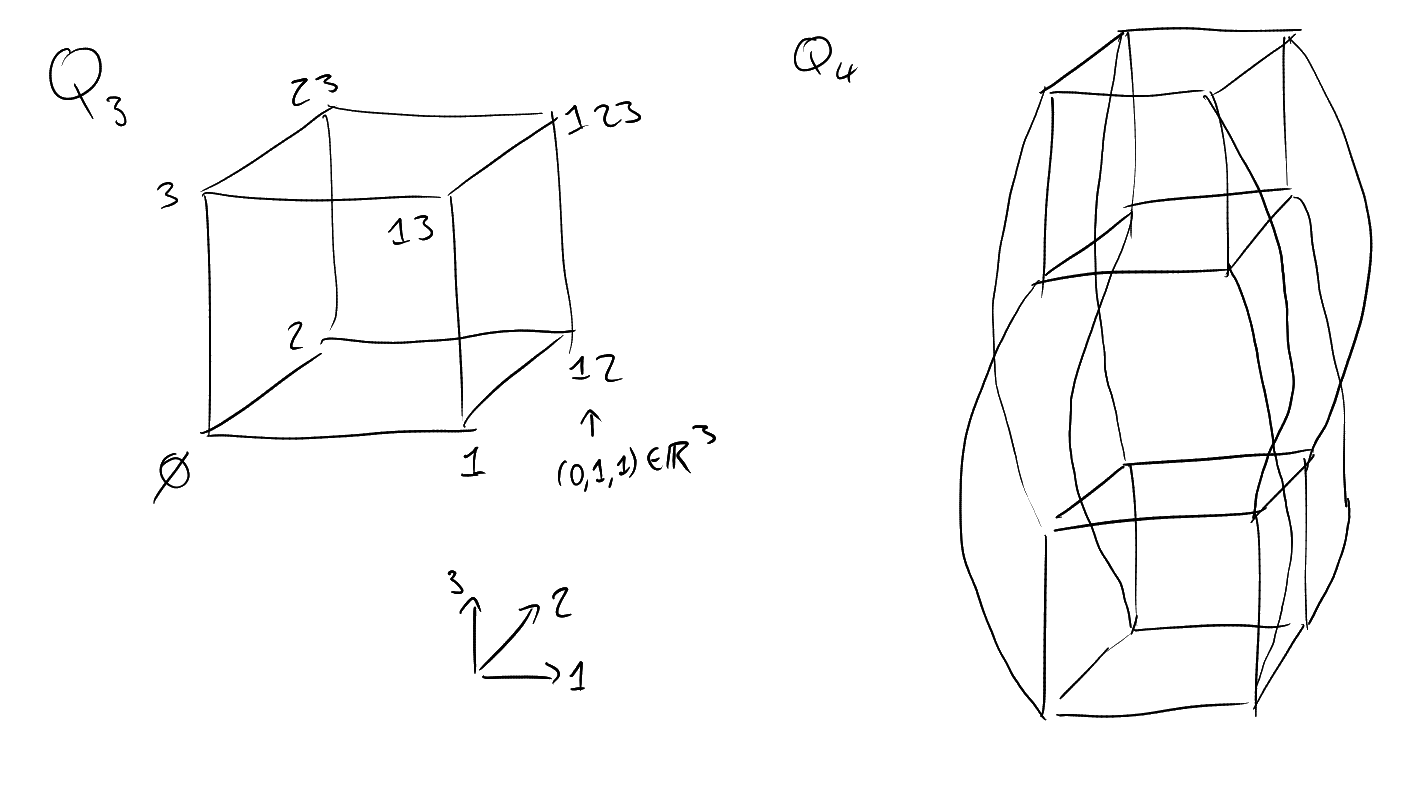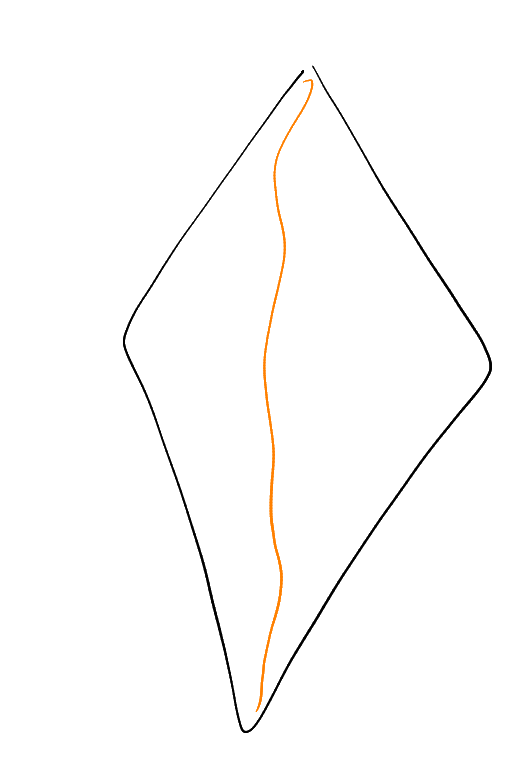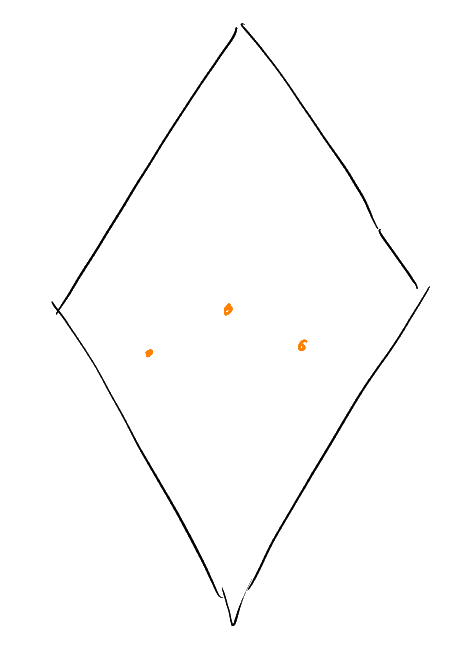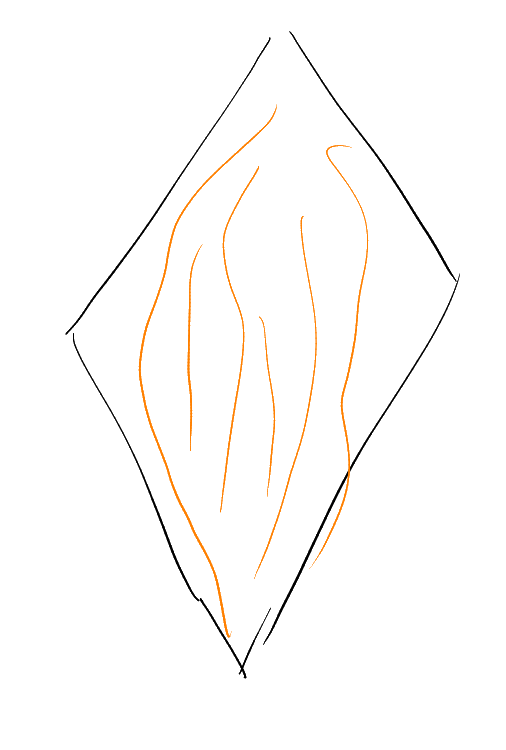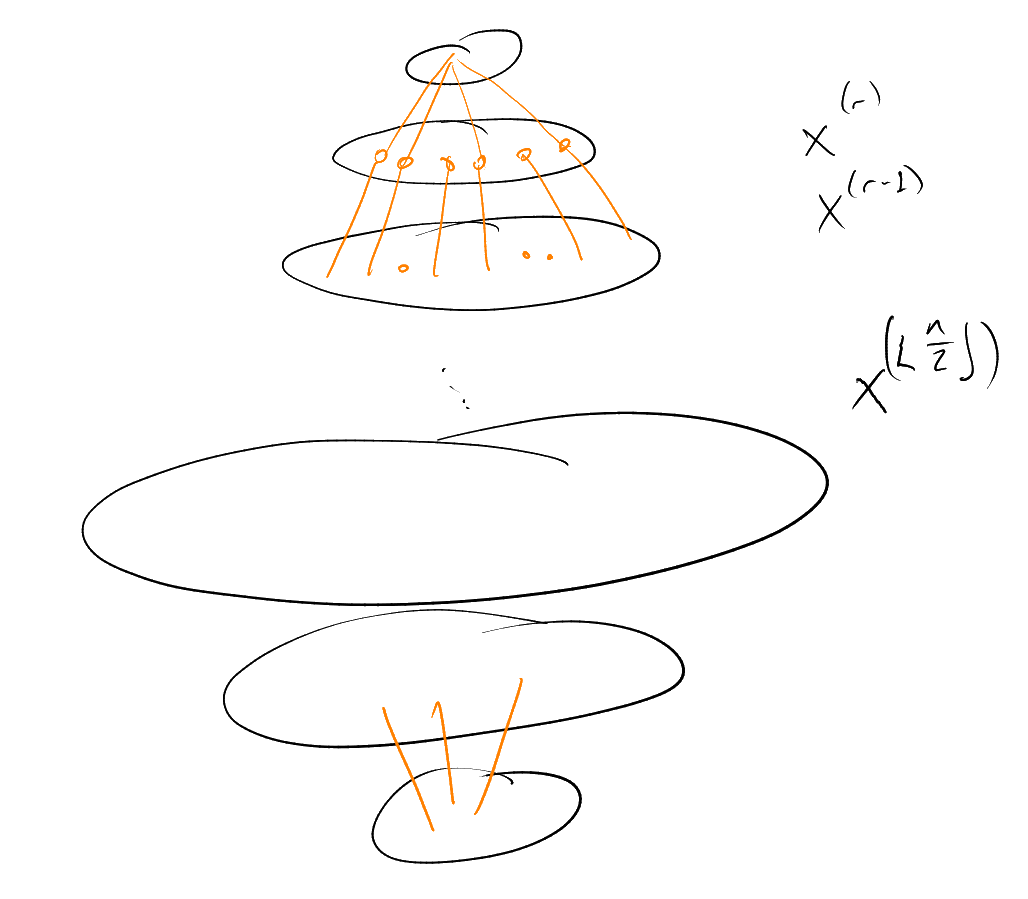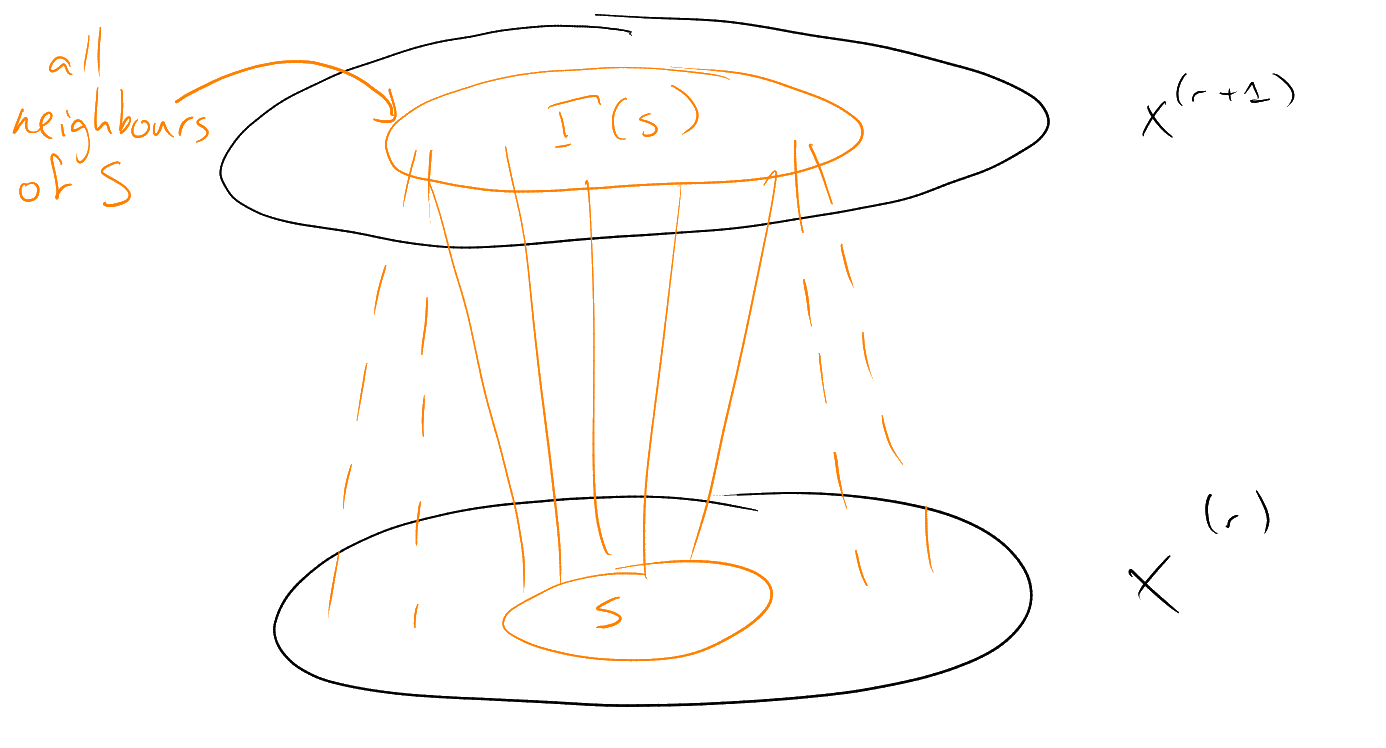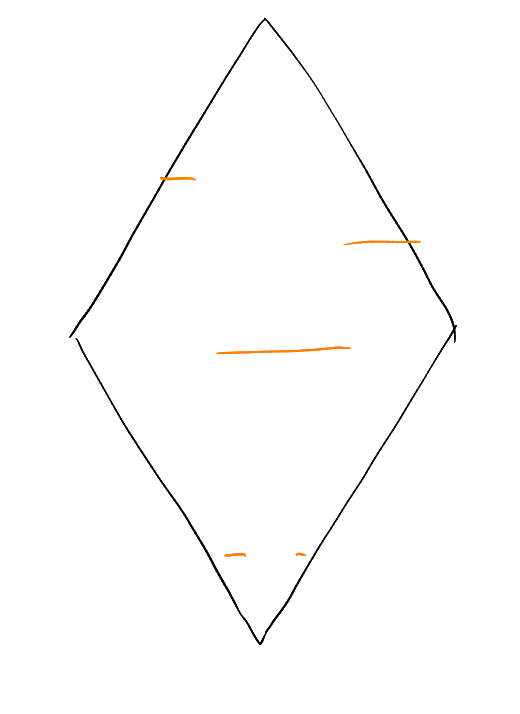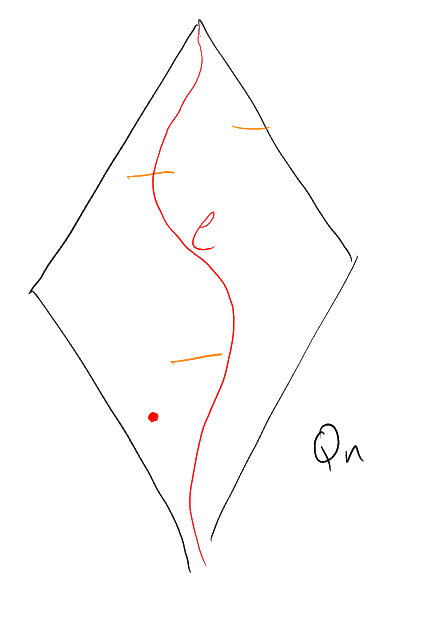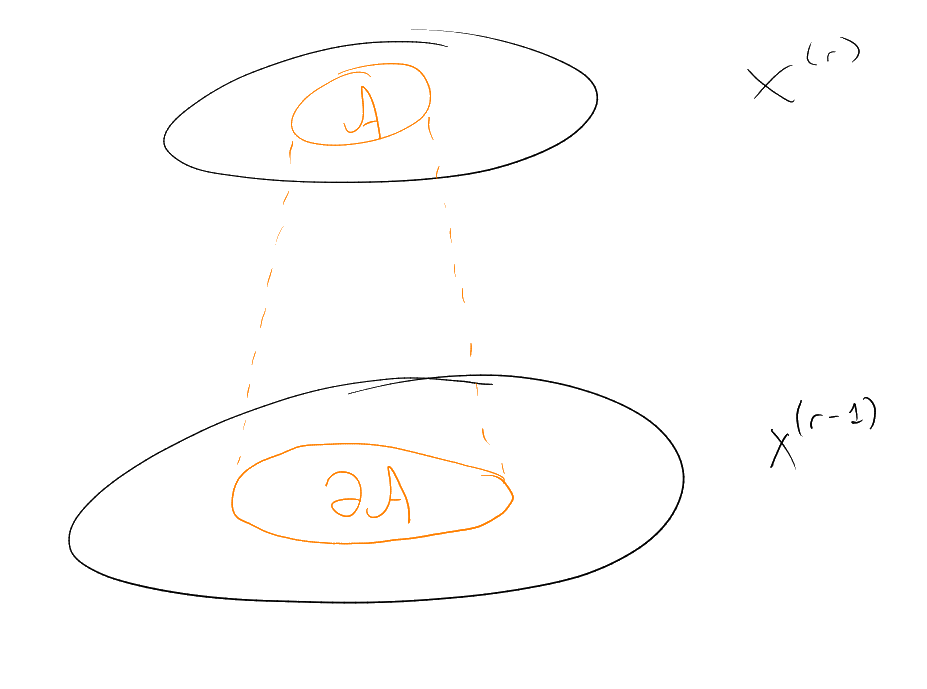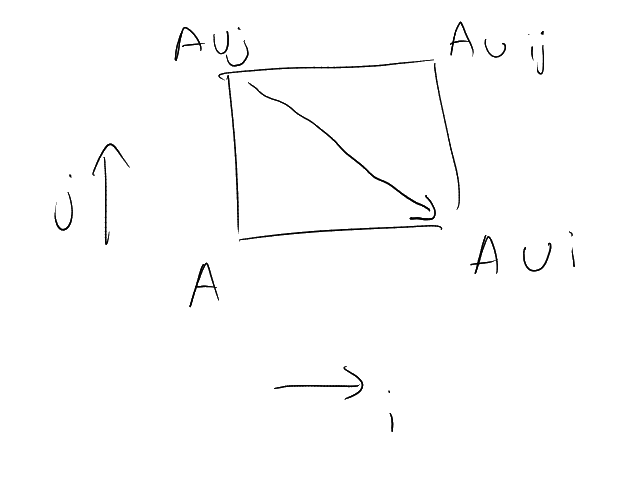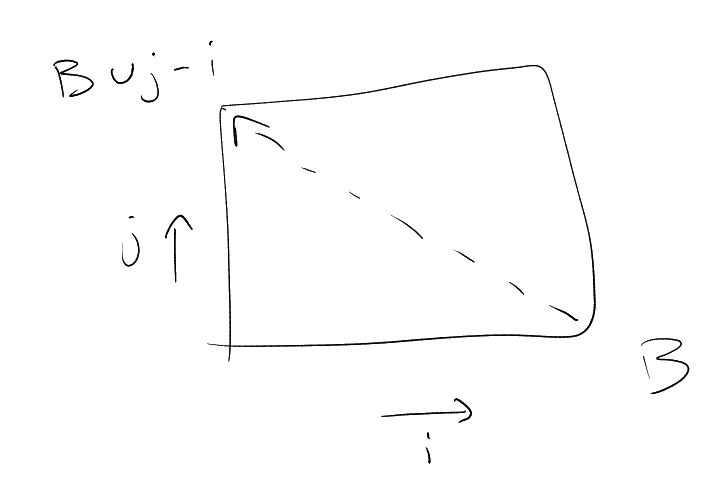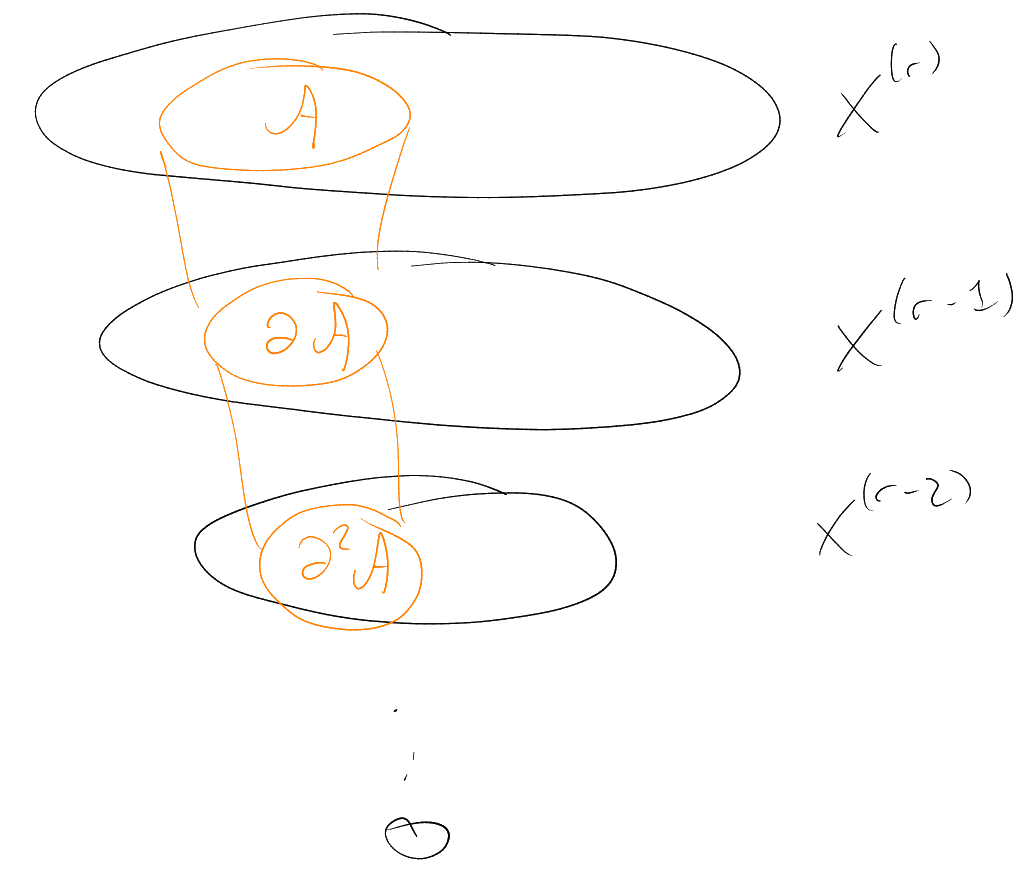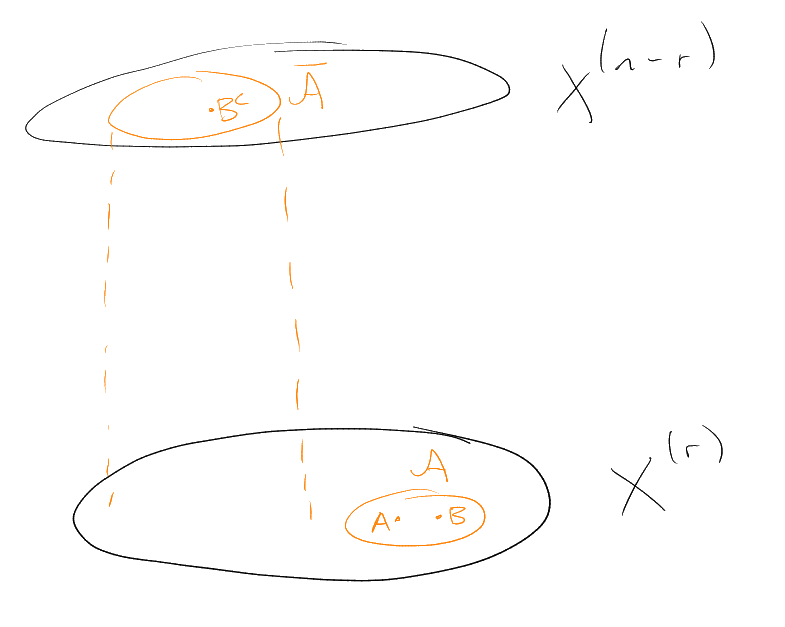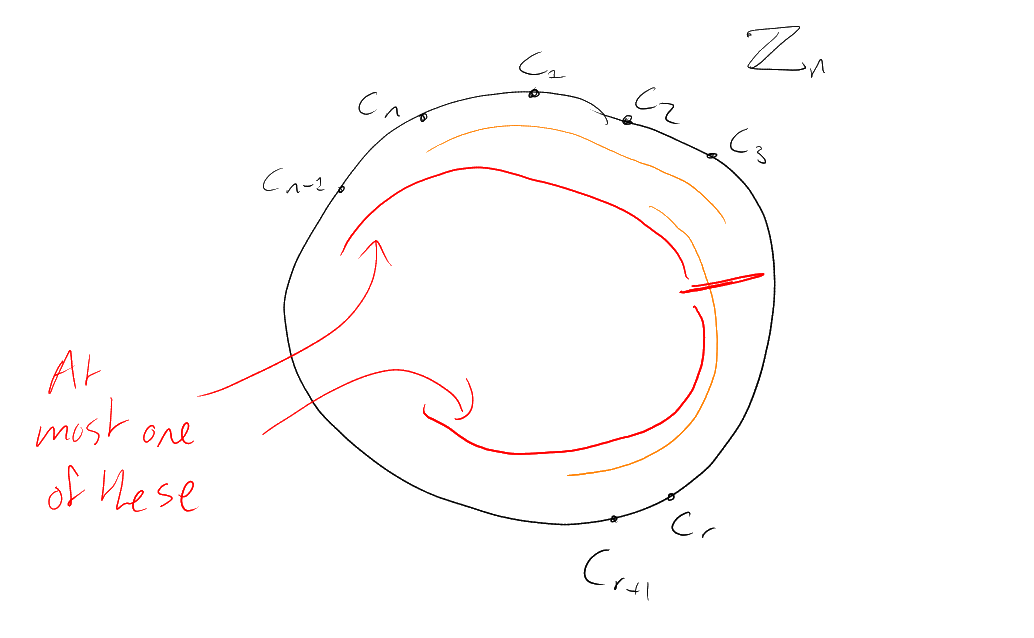1 Set Systems
Definition 1 (Set system).
Let
be a set. A set system on
(or a family of subsets of )
is a family .
Notation.
We will use the notation
We call an element of
an -set. We will
usually be using ,
so .
Example.
|
|
Definition 2 (Discrete cube).
Make
into a graph by joining
and
if ,
i.e. if
for some ,
or vice versa. We call this ths discrete cube
(if ).
Alternatively, can view
as an -dimensional
unit cube , by
identifying e.g.
with (i.e.
identify with
𝟙, the characteristic
function of ).
Definition 3 (Chain).
Say
is a chain if ,
either
or .
Example.
For example,
is a chain.
Definition 4 (Antichain).
Say
is an antichain if ,
,
we have .
How large can a chain be? Can achieve ,
for example using
Cannot beat this: for each ,
contains
-set.
How large can an antichain be? Can achieve ,
for example . More
generally, can take ,
for any – best
out of these is .
Can we beat this?
Theorem 5 (Sperner’s Lemma).
Assuming that:
Then .
Idea: Motivated by “a chain meets each layer in
point, because a layer is an antichain”, we will try to decompose the cube into chains.
Proof.
We’ll decompose
into
chains – then done. To achieve this, it is sufficient to find:
-
(i)
For each ,
a matching from
to
(recall that a matching here means a set of disjoint edges, one for each point in ).
-
(ii)
For each ,
a matching from
to .
We then put these together to form our chains, each passing through
.
By taking complements, it is enough to prove (i).
Let be the (bipartite)
subgraph of spanned
by : we seek a
matching from
to . For any
, the
number of
edges in is
(counting from
below) and
(counting from above).
Hence, as ,
Thus by Hall’s Marriage theorem, there exists a matching. □
Equality in Sperner’s Lemma? Proof above tells us nothing.
Aim: If
is an antichain then
“The percentages of each layer occupied add up to
.”
Trivially implies Sperner’s Lemma (think about it).
Definition 6 (Shadow).
For
(),
the shadow of
is
defined by, .
Example.
If ,
then .
Proposition 7 (Local LYM).
Assuming that:
“The fraction of the level occupied by
is the fraction
for ”.
Remark.
LYM = Lubell, Meshalkin, Yamamoto.
Proof.
The number of
edges in is
(counting from
above) and is
(counting from above). So
But ,
so done. □
Equality in Local LYM? Must have that ,
,
have
. So
or
.
Theorem 8 (LYM Inequality).
Assuming that:
Notation.
We will now start writing
for .
Proof 1.
“Bubble down with Local LYM”.
Have . Now,
and
disjoint
(as is
an antichain), so
|
|
whence
by Local LYM.
Now, note is
disjoint from
(since is
an antichain), so
|
|
whence
|
|
(Local LYM) so
|
|
Continue inductively. □
Equality in LYM Inequality? Must have had equality in each use of Local LYM. Hence equality in LYM Inequality
needs: max
with
has .
So: equality in Local LYM
for
some .
Hence: equality in Sperner’s Lemma if and only if
(if even),
and or
.
Proof 2.
Choose, uniformly at random, a maximal chain
(i.e.
, with
for all
).
For any -set
,
(all
-sets are equally
likely). So
(as events are disjoint) and hence
|
|
Equivalently: (if you want to lose the intuition about how this works) then:
, and
, hence
1.1 Shadows
For , know
. Equality is
rare – only for
or .
What happens in between?
In other words, given ,
how should we choose
to minimise ?
Believable that if
then we sholud take .
What if ?
Believable that should take
plus some -sets
in . For
example, for
with ,
take .
1.2 Two total orders on
Let and
be distinct
-sets:
say ,
where
and
.
Say that in the lexicographic
(or lex) ordering if for some
we have
for and
.
Slogan: “Use small elements” (“dictionary order”).
Example.
lexicographic on :
.
lexicographic on :
,
.
Say that in the colexicographic
(or colex) ordering if for some
we have
for all
and .
Slogan: “Avoid large elements” (note that this is not quite the same as “use small elements”, which is what we
had before).
Example.
colexicographic on :
.
colexicographic on :
,
.
Note that, in colexicographic,
is an initial segment (first
elements, for some )
of .
This is false for lex.
So we could view colexicographic as an enumeration of
.
Aim: colexicographic initial segments are best for
, i.e. if
and
is the initial segment
of colexicographic with ,
then .
In particular, .
1.3 Compressions
Idea: try to transform
into some
such that:
-
(i)
.
-
(ii)
.
-
(iii)
looks more like’
than
did.
Ideally, we’d like a family of such ‘compressions’:
such that either
or is so similar to
that we can directly
check that .
“colexicographic prefers 1 to 2” inspires:
Definition 9 (-compression).
Fix .
The -compression
is defined as follows:
For , set
|
|
and for ,
set
|
|
Note that the second part of the union in is
because we need to make sure that we “replace
by
where possible”.
Example.
If
then .
So , and
.
Say is
-compressed
if .
Proof.
Write
for . Let
. We’ll show
that ,
and
. [Then
done].
Have for
some ,
with
(as ). So
,
, and
.
Cannot have ,
else ,
giving ,
contradiction.
Hence we have ,
.
Also, ,
since .
Suppose : so
for some
. Cannot
have ,
else –
so (as
),
contradicting .
Hence
and .
Whence both
and belong
to (by
definition of ),
contradicting .
□
Remark.
Actually showed that .
Definition 11 (Left-compressed).
Say
is left-compressed if
for all .
Corollary 12.
Assuming that:
Proof.
Define a sequence
as follows. Set .
Having defined ,
if
left-compressed then stop the sequence with .
If not, choose
such that
is not -compression,
and set .
This must terminate, because for example
is strictly decreasing in .
Final term
satisfies ,
and
(by Lemma 10) □
Remark.
-
(1)
Or: among all
with
and ,
choose one with minimal .
-
(2)
Can choose order of the
so that no
applied twice.
-
(3)
Any initial segment of colexicographic is left-compressed. Converse false, for example
(initial segment of lexicographic).
These compressions only encode the idea “colexicographic prefers
to
()”, but
this is also true for lexicographic.
So we try to come up with more compressions that encode more of what colexicographic likes.
“colexicographic prefers
to ”
inspires:
Definition 13 (-compression).
Let
with ,
and
. We define the
-compression as
follows: for ,
|
|
and for ,
set
|
|
Example.
If
|
|
then
|
|
So , and
.
Say is
-compressed
if .
Sadly, we can have :
Example.
has ,
but has
.
Despite this, we at least we do have the following:
Proof.
Suppose not. So there exists
with , in
colexicographic but ,
.
Put ,
.
Then , and
disjoint,
and
(since ,
by definition of colexicographic).
So ,
contradicting is
-compression.
□
Lemma 15.
Assuming that:
-
-
-
-
-
-
|
|
Proof.
Let .
For , we’ll
show ,
, and
. (Then
done).
Have for
some ,
and , so
,
, and
(by definition
of ).
If : there
exists such
that is
-compressed,
so from we
have –
contradicting ,
contradiction.
Thus ,
and so ,
. Certainly
(because
), so just need
to show that .
Suppose : so
, for some
. Also have
(for
example, as
contained in it).
If :
know is
-compressed
for some , so
–
contradicting .
If : have
,
, so by definition
of we must have
that both
and –
contradicting ,
a contradiction. □
Theorem 16 (Kruskal-Katona).
Assuming that:
Then . In
particular: if
,
then
.
Proof.
Let . Define
a sequence of
set systems in
as follows:
-
Set .
-
Having chosen ,
if
is -compressed
for all
then stop. Otherwise, choose
with
minimal such that
is not -compressed.
Note that
such that
(namely, use ).
So ()
is satisfied.
So Lemma 15 tells us that .
Set ,
and continue.
Must terminate, as is strictly
decreasing. The final term
satisfies ,
and is
-compressed
for all .
So by
Lemma 14. □
For ,
, the upper
shadow of
is
|
|
Corollary 17.
Assuming that:
Note that the shadow of an initial segment of colexicographic on
is an initial segment
of colexicographic on
– as if
then .
This fact gives:
Corollary 18.
Assuming that:
-
,
and
is the initial segment of
colexicographic on
with
Then
for all
.
Proof.
If ,
then ,
because
is an initial segment of colexicographic. Done by induction. □
Note.
If ,
then .
1.4 Intersecting Families
Say
intersecting if
for all .
How large can an intersecting family be? Can have
, by
taking .
Proposition 19.
Assuming that:
Then .
Proof.
For any ,
at most one of
can belong to .
□
Note.
Many other extremal examples. For example, for
odd
take .
What if ?
If , take
.
If : just choose
one of
for all :
gives .
So interesting case is .
Could try .
Has size
(while this identity can be verified by writing out factorials, a more useful way of observing it is by noting
that ).
Could also try .
Example.
,
. Then
and
|
|
Theorem 20 (Erdos-Ko-Rado Theorem).
Assuming that:
Then .
Proof 1 (“Bubble down with Kruskal-Katona”).
Note that
.
Let . Have
and
are disjoint
families of -sets.
Suppose . Then
. Whence by
Kruskal-Katona we have .
So , a
contradiction. □
Remark.
Calculation at the end had to give the right answer, as the
calculations would
all be exact if .
Proof 2.
Pick a cyclic ordering of
i.e. a bijection .
How many sets in
are intervals (
consecutive elements) in this ordering?
Answer: . Because
say . Then for each
, at most one of
the two intervals
and can belong
to (subscrpits
are modulo ).
For each -set
, in how
many of the
cyclic orderings is it an interval?
Answer:
( where,
order
inside ,
order
outside ).
Hence ,
i.e. .
□
